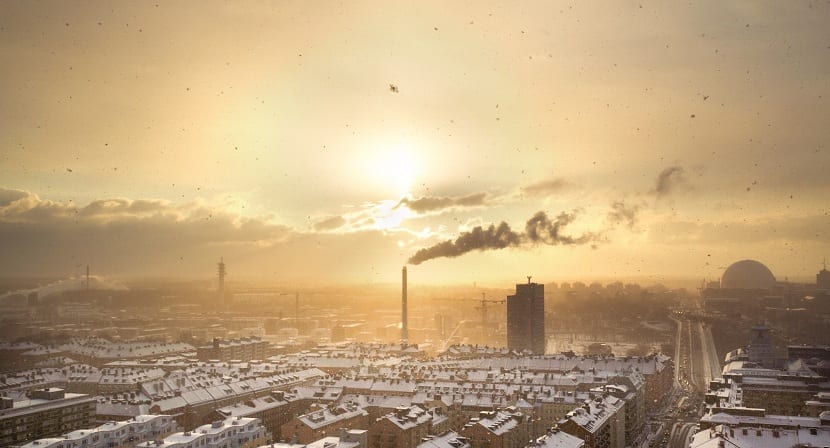
The greenhouse effect It is something that almost everyone has heard of today. Many say that the greenhouse effect is increasing global temperatures and increasing the effects of climate change. It is also related to global warming. But do you really know the role of the greenhouse effect, how it occurs and what impact it has on the planet?
Before explaining what the greenhouse effect is, I will make a statement for you to read this with the importance it must have: "Without the greenhouse effect, life would not exist today as we know it since it would not be possible". That being said, I hope it has the importance it deserves.
Definition of Greenhouse Effect
The so-called "greenhouse effect" consists of the rise in temperature of the planet caused by the action of a certain group of gases, some of them massively produced by man, which absorb infrared radiation, causing the earth's surface and the lower part of the surrounding atmospheric layer to heat up. It is thanks to this greenhouse effect that life on Earth is possible, since, otherwise, the average temperatures would be around -88 degrees.

What are greenhouse gases?
The so-called greenhouse gases or greenhouse gases, responsible for the effect described above, are:
- Water vapor (H2O)
- Carbon dioxide (CO2)
- Methane (CH4)
- Nitrogen oxides (NOx)
- Ozone (O3)
- Chlorofluorocarbons (CFCartificial)
Although all of them (except CFCs) are natural, since the Industrial Revolution and mainly due to the intensive use of fossil fuels in industrial activities and transportation, there have been significant increases in the amounts emitted into the atmosphere. The characteristics of these greenhouse gases is that retain heatTherefore, the higher the concentration of these gases in the atmosphere, the less heat can escape.
Everything is aggravated by the existence of other human activities, such as deforestation, which have limited the regenerative capacity of the atmosphere to eliminate carbon dioxide, the main responsible for the greenhouse effect since it is the one that is emitted the most today.
Water vapor
Water vapor (H2O) is the largest contributor to the natural greenhouse effect and it is the one that is most directly linked to climate and, therefore, least directly controlled by human activity. This is so because evaporation depends strongly on the surface temperature (which is hardly modified by human activity, if we consider large areas), and because water vapor passes through the atmosphere in very fast cycles, lasting per term. half of one every eight to nine days.
Carbon dioxide
Carbon dioxide (CO2) helps the Earth have a habitable temperature, as long as its concentration remains within a certain range. Without carbon dioxide, the Earth would be a block of ice, but on the other hand, an excess prevents the exit of heat into space and causes excessive warming of the planet. It originates from both natural sources (respiration, decomposition of organic matter, natural forest fires) and anthropogenic (burning of fossil fuels, changes in land use (mainly deforestation), biomass burning, industrial activities, etc.
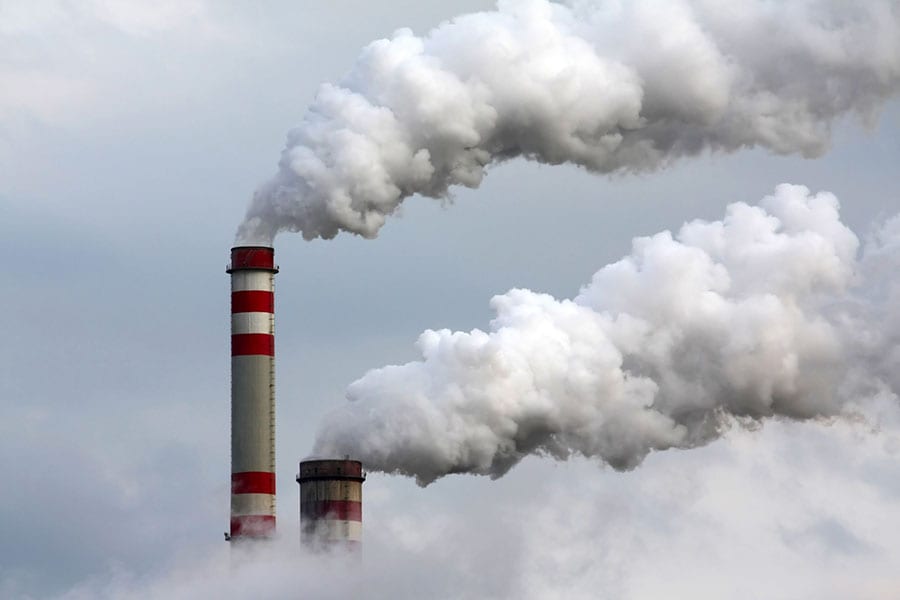
Methane
It is a substance that occurs in the form of gas at ordinary temperatures and pressures. It is colorless and hardly soluble in water in its liquid phase. 60% of its emissions worldwide it is of anthropogenic origin, mainly from agricultural and other human activities. Although it also originates from the decomposition of organic waste, natural sources, extraction of fossil fuels, etc. In conditions where there is no oxygen.
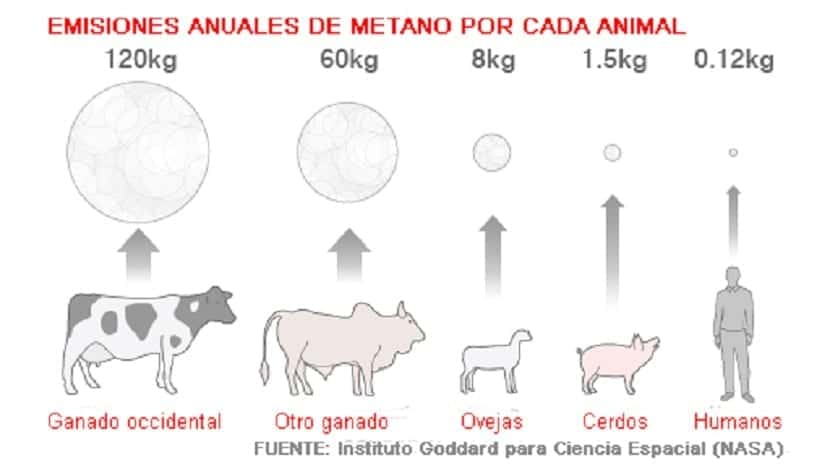
Nitrogen oxides
Nitrogen oxides (NOX) are gaseous nitrogen and oxygen compounds that form in the combustion with excess oxygen and high temperatures. They are released into the air from motor vehicle exhaust (especially diesel and lean-burn), from the combustion of coal, oil, or natural gas, and during processes such as arc welding, electroplating, metal etching, and dynamite detonation. .
Ozone
Ozone (O3), at ambient temperature and pressure, is a colorless gas with a pungent odor, which in large concentrations can turn bluish. Its main property is that it is a very strong oxidant, being mainly known for the important role it plays in the atmosphere. Stratospheric ozone acts as a filter that does not let pass harmful UV radiation to the surface of the earth. However, if ozone is present in the lower zone of the atmosphere (troposphere), it can cause, in sufficient concentration, damage to vegetation.
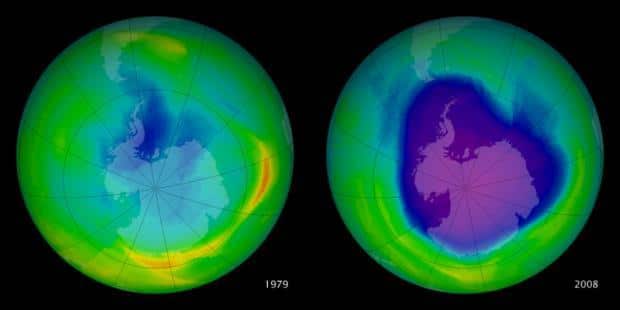
CFCs
Chlorofluorocarbons, also called CFCs, are derived from hydrocarbons and, due to their high physical-chemical stability, have been widely used as coolants, extinguishing agents and propellants for aerosols. The manufacture and use of chlorofluorocarbons were prohibited by the Montreal protocol, because they attack the ozone layer through a photochemical reaction. One ton of CFCs will produce a global warming impact in the 100 years following its emission into the atmosphere equivalent to 4000 times the same proportion of carbon dioxide (CO2).
Consequences of the increased greenhouse effect
As we have already seen, the greenhouse effect is not the “bad” in this film, but its progressive increase. As human activities increase, we are seeing how greenhouse gas emissions increase and how each time increase more the average temperatures of the planet. This can have very negative consequences for the environment as well as for humans and their way of life
The consequences that the greenhouse effect can cause are:
- The increase in the average temperature of the planet.
- The increase in droughts in some areas and floods in others.
- A higher frequency of hurricane formation.
- The progressive thawing of the polar caps, with the consequent rise in ocean levels.
- An increase in precipitation worldwide (it will rain fewer days and more torrentially).
- Increase in the number of hot days, translated into heat waves.
- Destruction of ecosystems.
With the recently signed Paris Agreement The countries that have ratified it intend to reduce greenhouse gas emissions into the atmosphere, thus helping to mitigate the devastating effects of climate change. The scientific community has carried out several studies in which it is concluded that if the average temperatures of the planet increase by more than two degrees Celsius, the effects would be irreversible. That is why they have set the maximum CO2 concentration on the planet at 400 ppm. To date, this concentration has been exceeded two consecutive years.
Negative effects of greenhouse gases on humans
NO2 can cause effects on the health and well-being of people, causing irritation to the nasal mucosa and damaging the respiratory system by penetrating the deeper areas of the lungs, and by contributing to the formation of acid rain.
For its part, SO2 reacts with atmospheric water to produce acid rain, irritates mucus and eyes and causes coughing when inhaled. Acid rain can also have indirect effects on health, since acidified waters can dissolve metals and toxic substances from soils, rocks, conduits and pipes and subsequently transport them to drinking water systems for human consumption, producing intoxication.
Acid rain
The main effect of these gases on the natural environment is acid rain. The phenomenon of acid rain (including also snow, fog and acid dew) has negative consequences on the environment, because it not only affects water quality, but also soils, ecosystems and, consequently, particular to vegetation. Another effect of acid rain is the increase in the acidity of fresh waters and as a consequence the increase in highly toxic heavy metals that cause the breakdown of the trophic chains and the reproductive process of fish, condemning rivers and lakes to a slow but implacable decrease in their fauna.
Acid rain also has negative effects within the urban environment, on the one hand, the corrosion of buildings, the degradation of the stones of cathedrals and other historical monuments and, on the other, the affections of the respiratory system in human beings, already mentioned .
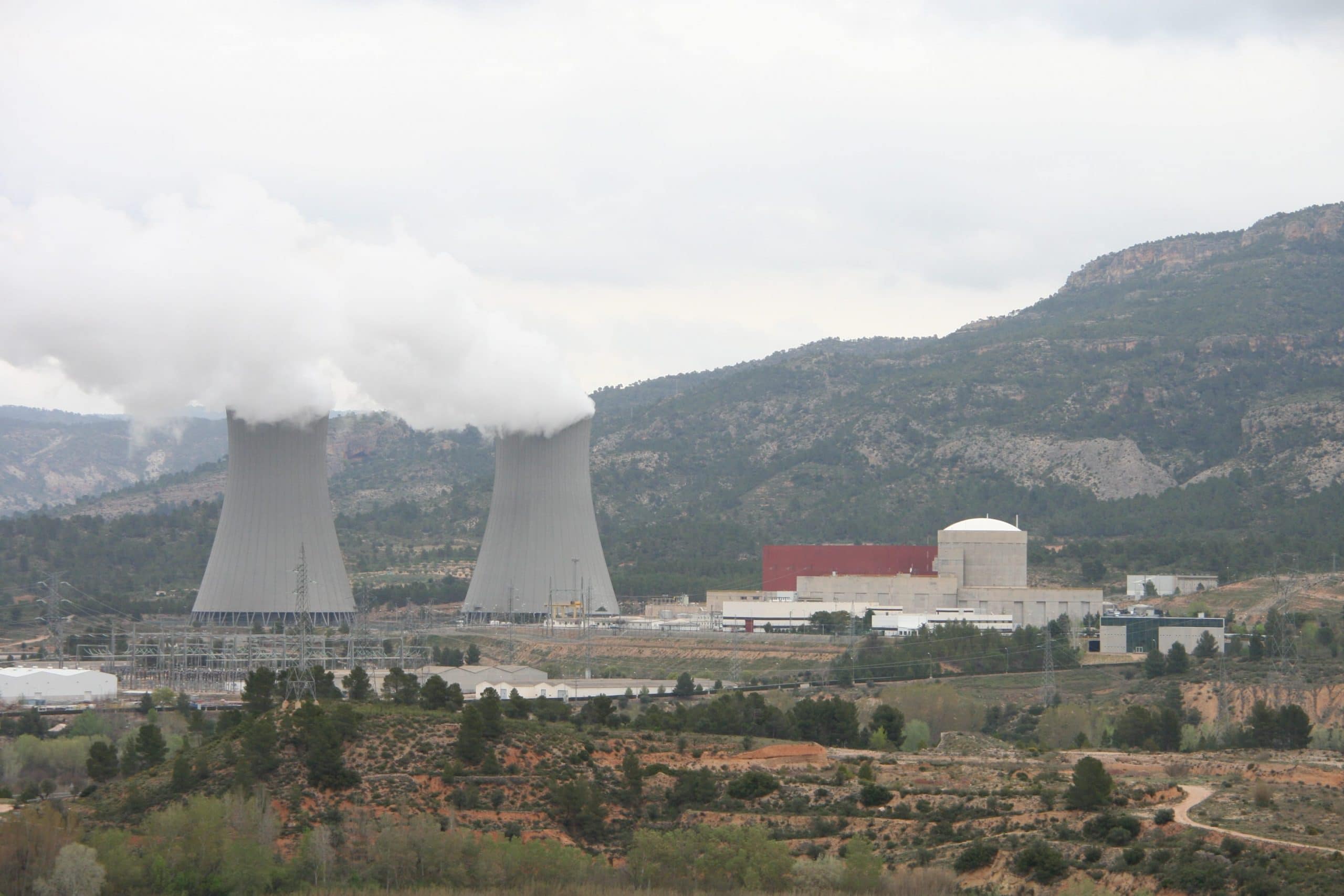

Photochemical smog
Another effect of acid gases is a phenomenon known as smog; which is an Anglicism formed from the union of the words smoke (smoke) and fog (fog) is a form of air pollution originated from the incorporation of smoke into fog (from one aerosol to another aerosol). Gray smog or industrial smog is the air pollution produced by soot and sulfur. The main source of pollutant emissions that contribute to gray smog is the combustion of coal, which can be high in sulfur. There is a photochemical smog originated from substances that contain nitrogen and automobile combustion smoke, mixed under the effects of solar radiation producing ozone gas, which is highly toxic.
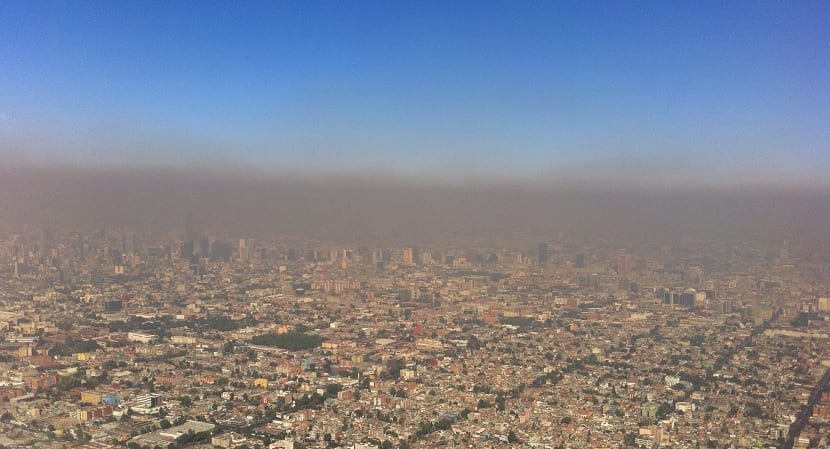
What can we do to reduce the greenhouse effect?
The emission of gases must be controlled on two different scales, depending on whether they refer to the emission in vehicles or to the industry in general.
Truck and car engines are a very important source of these pollutants. To reduce emissions, it is advisable to use both prevention and cleaning measures for the gases emitted by the engine before they are released into the atmosphere. You can contribute to reducing the greenhouse effect with the following measures:
- Use more public transport, cycling or walking.
- Use engines with low-polluting technologies, for example, engines that replace current fuels with less polluting fuels, for example, natural gas, alcohols, hydrogen or electric.
- Improve the efficiency of the engines so that more kilometers can be done with fewer liters of fuel.
- Modify the engine so that its emissions are reduced.
- Increase the rates and taxes that the most polluting cars must pay and encourage their change for new ones. This would encourage automakers to cut emissions and encourage buyers to purchase cleaner vehicles.
- Create pedestrian zones in city centers and, in general, restrict the circulation of private vehicles in some areas of the cities.

Use more public transport
With this you can learn more about this effect that keeps us alive but it is also vital to keep it in a stable enough balance so that its increase does not cause climatic disasters.
The article is very interesting, I congratulate you